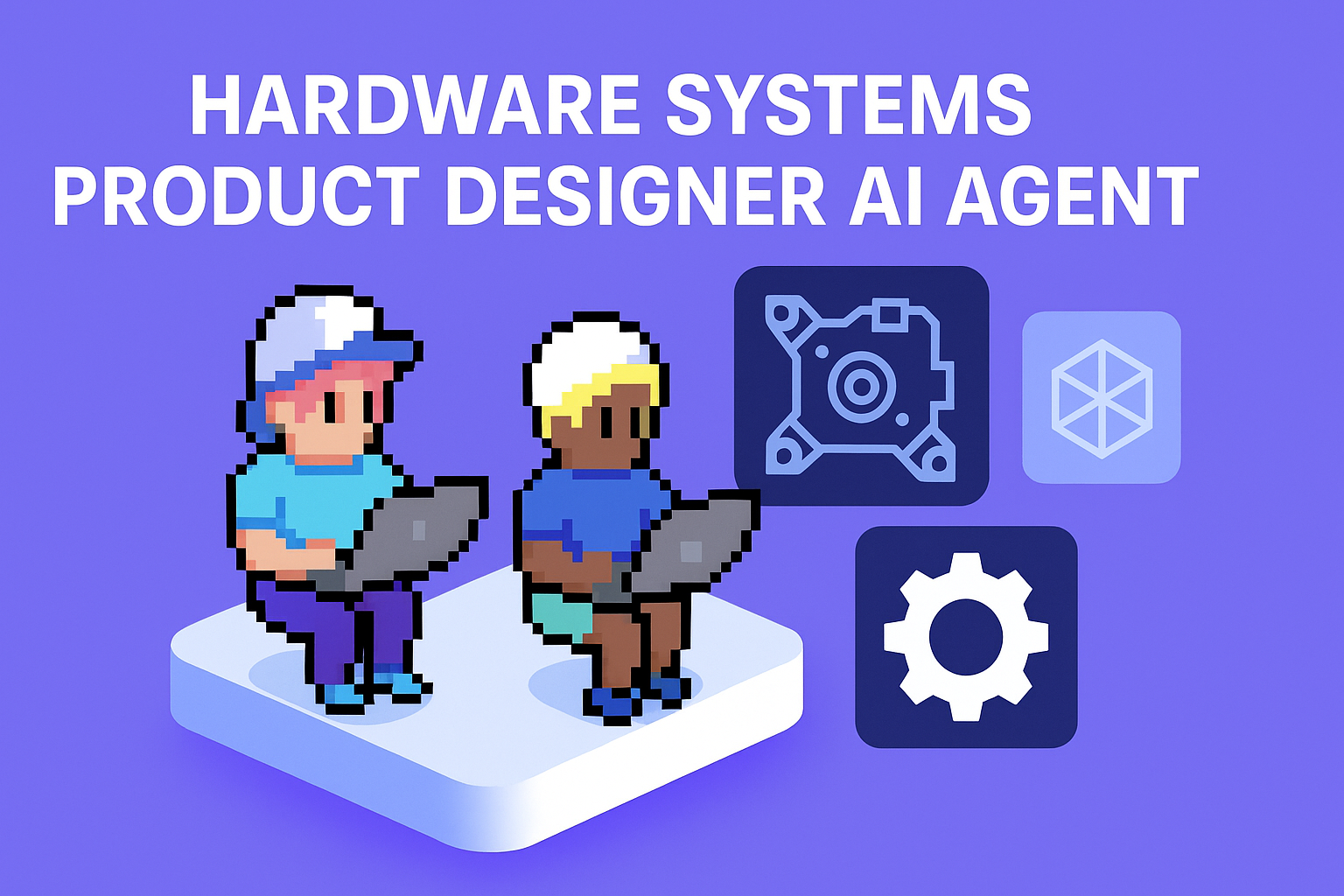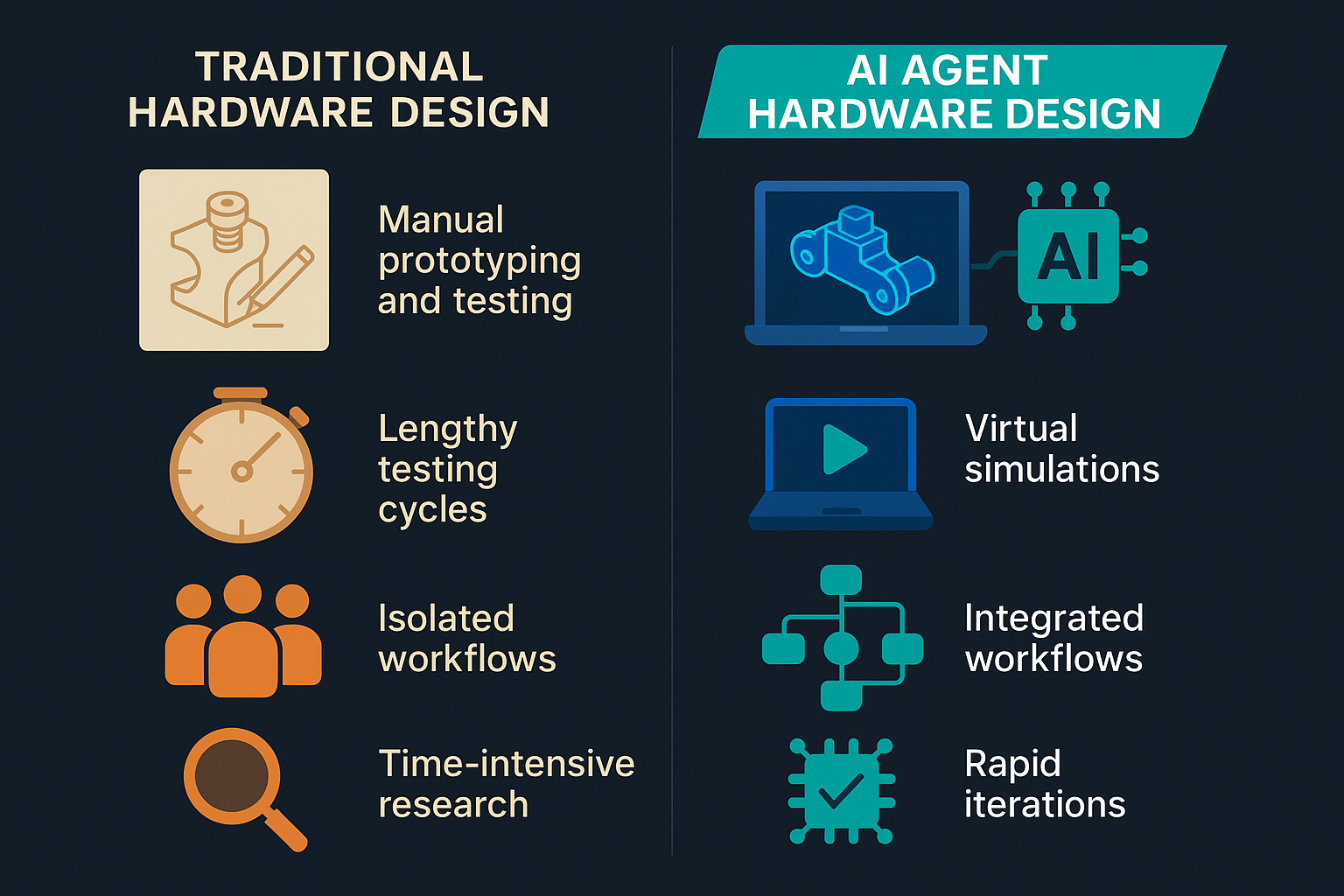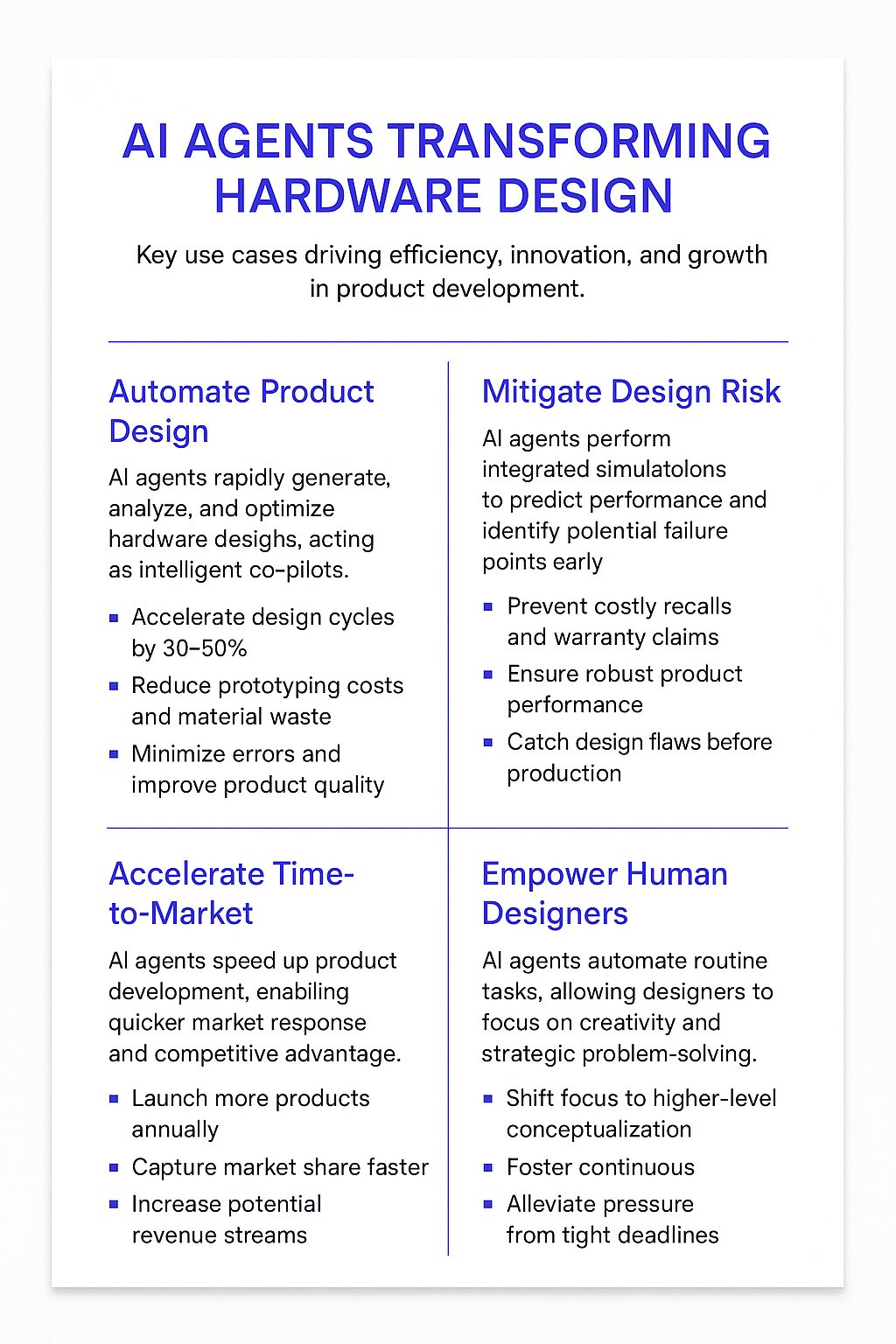
A Hardware Systems Product Designer AI Agent is a digital tool that assists in the design, analysis, and optimization of hardware systems, ranging from consumer electronics to complex industrial equipment. It leverages machine learning, simulation, and optimization algorithms to automate tasks such as generating design concepts, evaluating performance, and ensuring manufacturability. These agents can analyze vast datasets of material properties, manufacturing processes, and performance data to identify optimal design solutions.

Traditional hardware systems product design relied heavily on manual processes, iterative prototyping, and extensive physical testing. Engineers spent countless hours creating CAD models, running simulations, and analyzing data. This process was time-consuming, expensive, and often limited the exploration of innovative design solutions.
The old workflow typically involved:
AI agents significantly accelerate the hardware design process, reduce costs, and enable the creation of more innovative and optimized products. By automating repetitive tasks and providing data-driven insights, these digital teammates empower engineers to focus on higher-level design challenges and creative problem-solving.
Key benefits include:
The network effects are significant. As AI agents analyze more design data and simulation results, they become increasingly accurate in predicting performance and identifying optimal design solutions. This creates a positive feedback loop that continuously improves the design process.
For hardware design teams, this means shifting from a reactive, iterative approach to a proactive, data-driven approach. The AI handles the grunt work of simulation and optimization, while engineers focus on defining design requirements, evaluating trade-offs, and ensuring the overall product meets customer needs.

The hardware design landscape is becoming increasingly complex, with shorter product cycles and more demanding performance requirements. AI agents offer a significant competitive advantage by enabling faster design cycles, reduced costs, and improved product performance. They are particularly effective at identifying subtle design improvements that can have a significant impact on overall product quality and reliability.
What's fascinating is how these AI agents can analyze vast datasets of material properties, manufacturing processes, and performance data to identify optimal design solutions. They can also learn from past design failures to avoid repeating mistakes.
The real unlock comes from combining AI with advanced simulation techniques. This allows engineers to virtually test designs under a wide range of conditions, identifying potential problems before they occur in the real world.
The most successful implementations treat these digital teammates as design partners, leveraging their analytical capabilities to augment human creativity and expertise. They are particularly valuable for exploring unconventional design solutions and pushing the boundaries of what's possible.
Hardware systems product designers face constant pressure to create innovative, high-performance products while meeting tight deadlines and budget constraints. AI agents are becoming essential tools in the hardware design workflow, handling everything from initial concept generation to final design optimization. The integration of AI in hardware design isn't just about automation; it's about empowering engineers to make better decisions and create more innovative products.
The real power emerges when hardware design teams deploy AI agents across different stages of their design pipeline. From analyzing material properties to optimizing manufacturing processes, these digital teammates enable engineers to focus on high-value creative decisions while ensuring technical excellence.
What makes AI particularly impactful in hardware design is its ability to process and learn from vast amounts of data. This means design teams can make informed decisions about material selection, design parameters, and manufacturing processes based on concrete insights rather than intuition alone.
The design of battery packs for electric vehicles is a complex challenge, requiring careful consideration of performance, safety, and cost. Video Marketing Specialist AI agents are transforming how engineers design and optimize these critical components.
A leading electric vehicle manufacturer deployed a Hardware Systems Product Designer AI agent to help their team design a new battery pack for their flagship model. The AI analyzed thousands of existing battery pack designs, identifying key parameters that influence performance, safety, and lifespan.
The AI provided real-time guidance during the design process, suggesting optimal cell arrangements, cooling strategies, and enclosure materials. For example, it recommended a specific cell spacing to minimize thermal hotspots and a lightweight composite material for the enclosure to reduce weight and improve crashworthiness.
Post-design, the AI automatically generated detailed simulation models to evaluate the battery pack's performance under various operating conditions. It identified potential failure modes and suggested design modifications to improve safety and reliability.
The results were impressive: the AI-optimized battery pack achieved a 15% increase in energy density, a 20% reduction in weight, and a significant improvement in safety performance. The manufacturer was able to bring their new electric vehicle to market faster and with greater confidence.
What's particularly fascinating is how the AI learns and adapts. It noticed that certain cell arrangements performed better under specific driving conditions, so it began prioritizing these arrangements in future designs. This kind of data-driven optimization would be nearly impossible for human engineers to identify and implement at scale.
The success of this implementation has led to widespread adoption of AI-powered design tools in the electric vehicle industry.

Hardware systems product designer AI agents require large amounts of high-quality data to train effectively. This data may include material properties, manufacturing process parameters, simulation results, and performance data. Acquiring and curating this data can be a significant challenge.
Training and running AI models for hardware design can be computationally intensive, requiring access to powerful computing resources. This may require investing in specialized hardware or cloud-based computing services.
It is essential to validate the accuracy and reliability of AI models before deploying them in a production environment. This may involve comparing simulation results with experimental data or conducting physical testing of AI-optimized designs.
Integrating AI agents with existing CAD, simulation, and PLM tools can be complex, requiring custom software development and data integration efforts.
Effectively using AI agents for hardware design requires a combination of engineering expertise and AI knowledge. Organizations may need to invest in training or hire specialized personnel to support the implementation and use of these tools.
AI agents can automate design decisions, potentially leading to unintended consequences or biases. It is important to consider the ethical implications of using AI in hardware design and to ensure that AI-driven decisions are aligned with organizational values and societal norms.
Hardware Systems Product Designer AI Agents represent a fundamental shift in how teams approach product creation and optimization. The most successful implementations treat these digital teammates as growth partners, leveraging their data processing capabilities while maintaining human oversight on creative direction. As these systems continue to evolve, their ability to identify micro-opportunities and optimize content will become increasingly sophisticated, creating an ever-widening competitive advantage for early adopters.
The integration of advanced data analysis capabilities allows marketing teams to make more informed decisions about content strategy, audience targeting, and performance optimization. The key to success lies in finding the right balance between AI-driven insights and human creativity - using these tools to enhance rather than replace human decision-making in hardware design strategy.